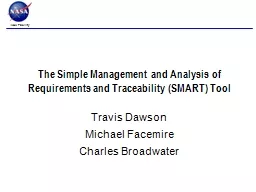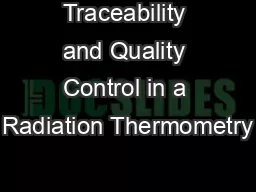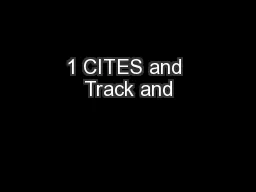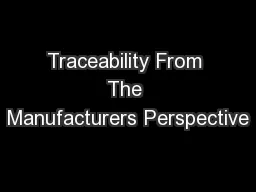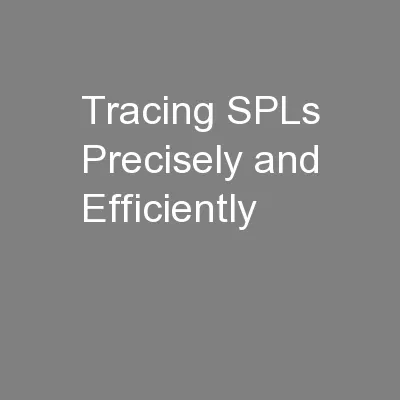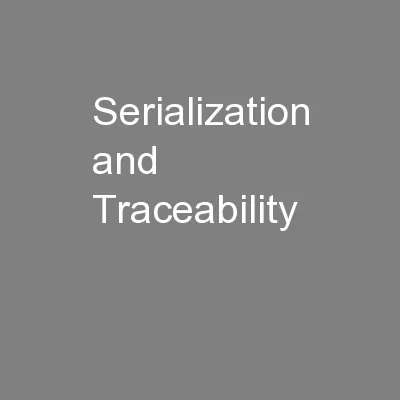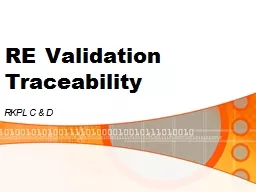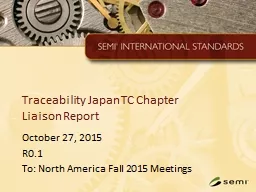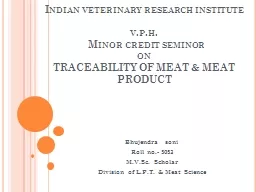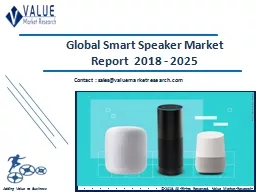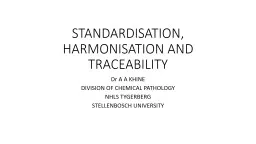PPT-The Simple Management and Analysis of Requirements and Traceability (SMART) Tool
Author : lois-ondreau | Published Date : 2018-09-22
Travis Dawson Michael Facemire Charles Broadwater Genesis 2 The Need Much of what IVampV does involves tracing or evaluating developer traces of one artifact element
Presentation Embed Code
Download Presentation
Download Presentation The PPT/PDF document "The Simple Management and Analysis of Re..." is the property of its rightful owner. Permission is granted to download and print the materials on this website for personal, non-commercial use only, and to display it on your personal computer provided you do not modify the materials and that you retain all copyright notices contained in the materials. By downloading content from our website, you accept the terms of this agreement.
The Simple Management and Analysis of Requirements and Traceability (SMART) Tool: Transcript
Download Rules Of Document
"The Simple Management and Analysis of Requirements and Traceability (SMART) Tool"The content belongs to its owner. You may download and print it for personal use, without modification, and keep all copyright notices. By downloading, you agree to these terms.
Related Documents

